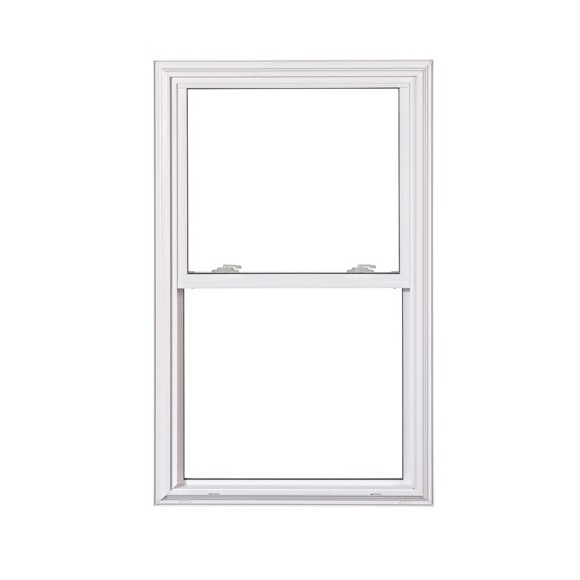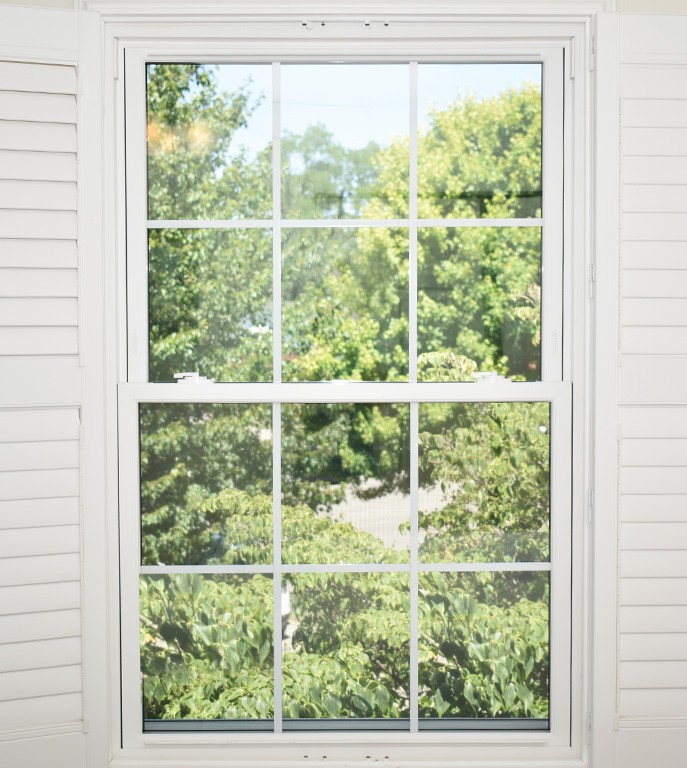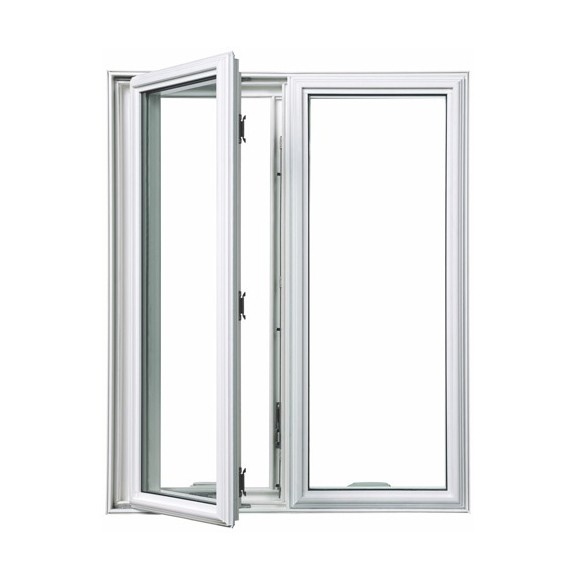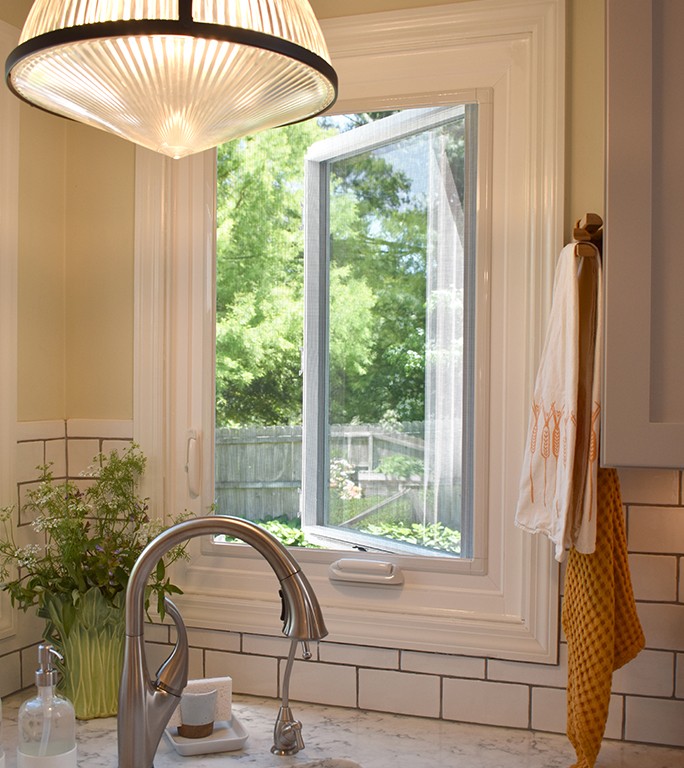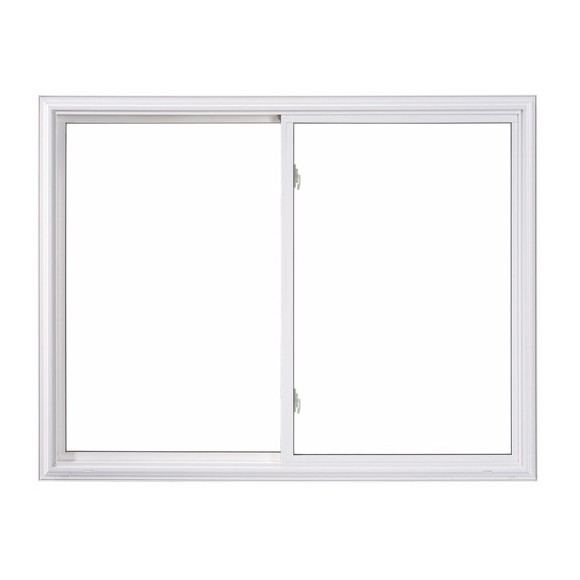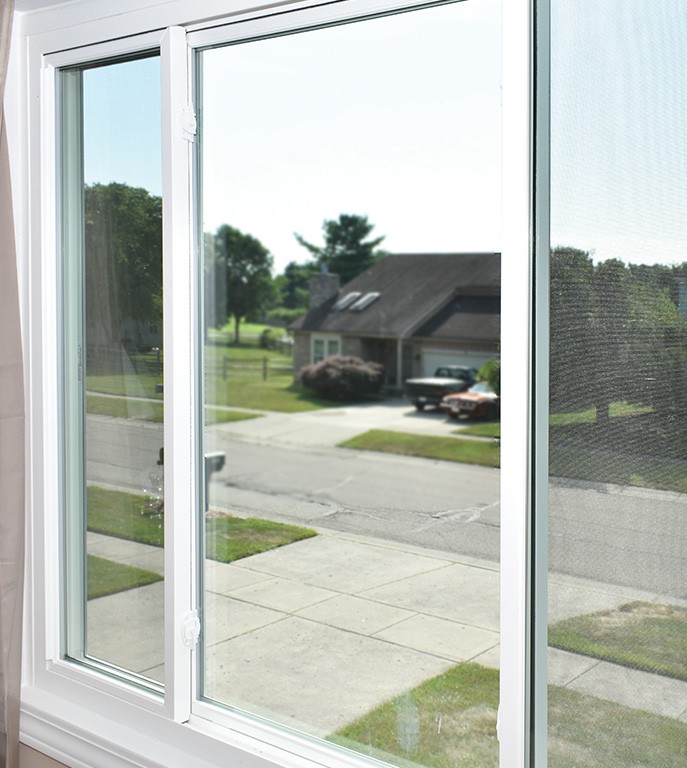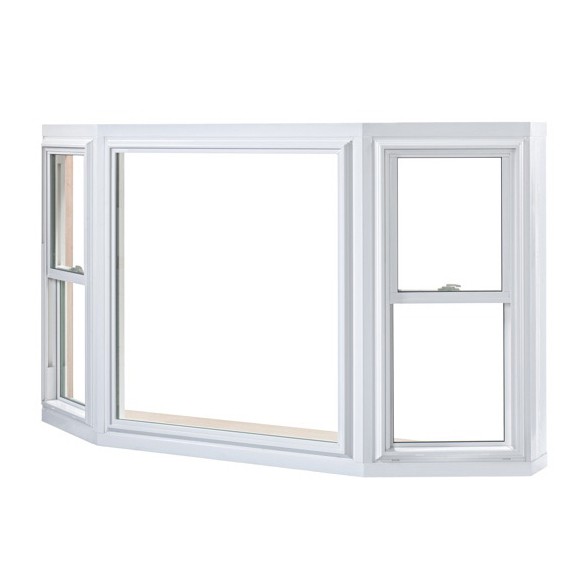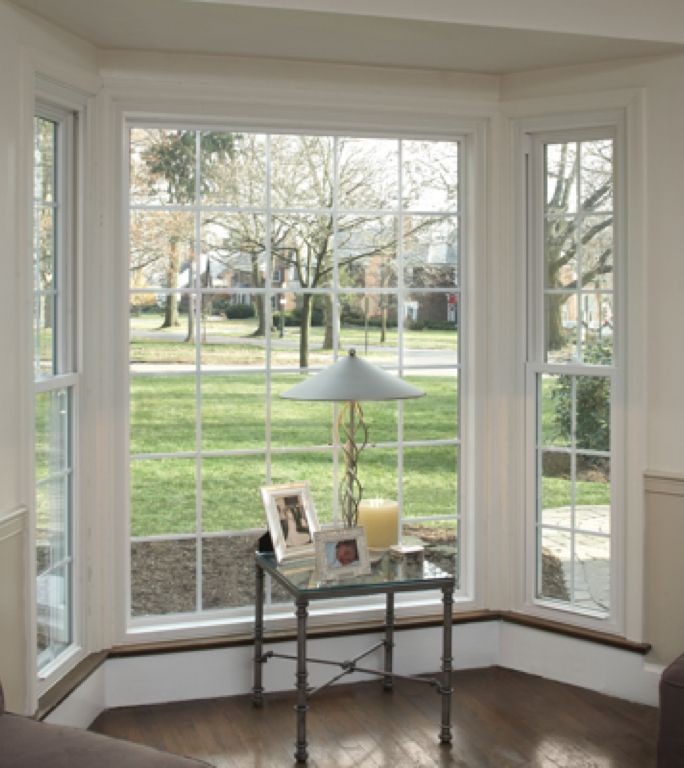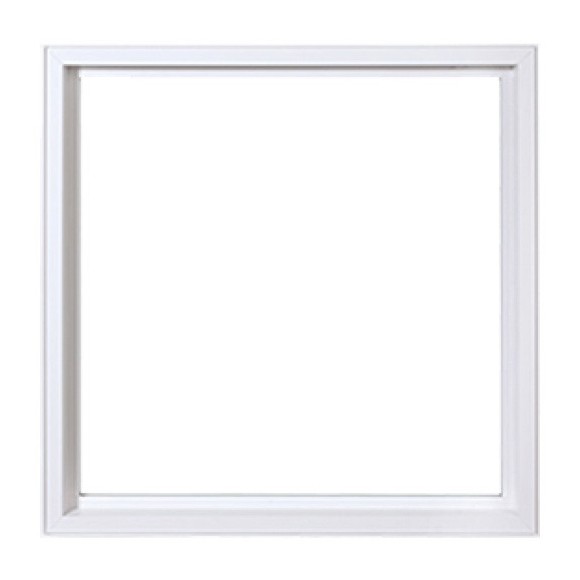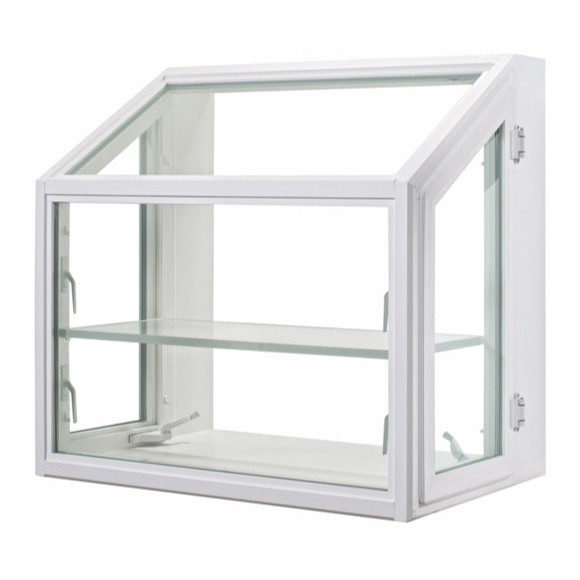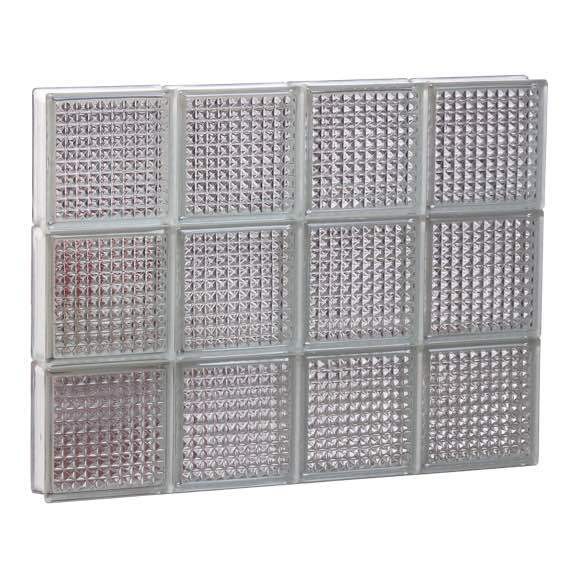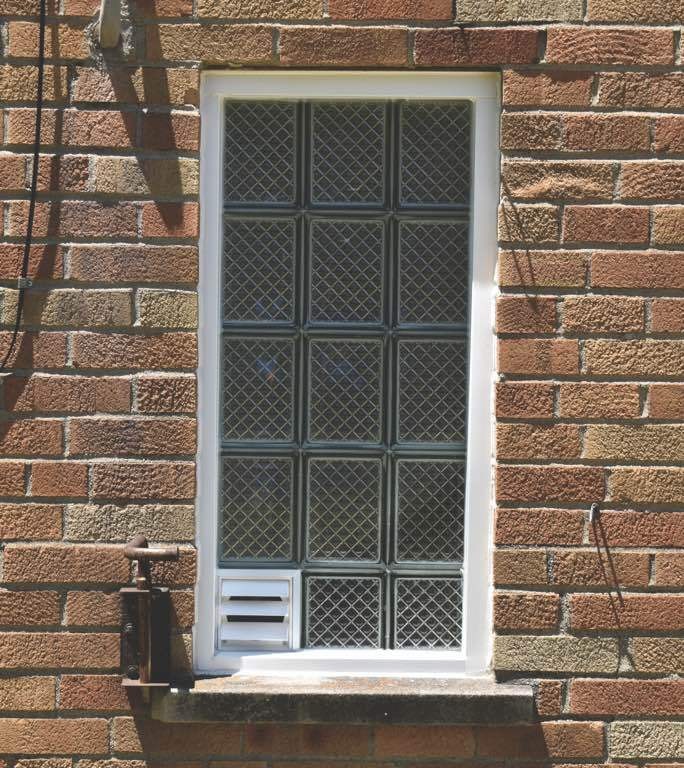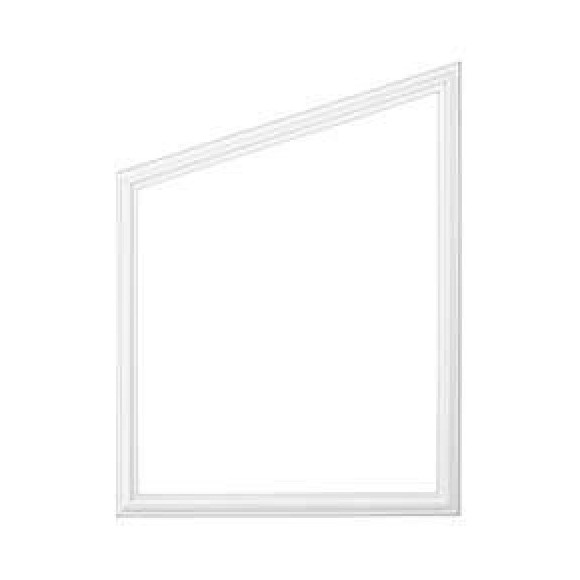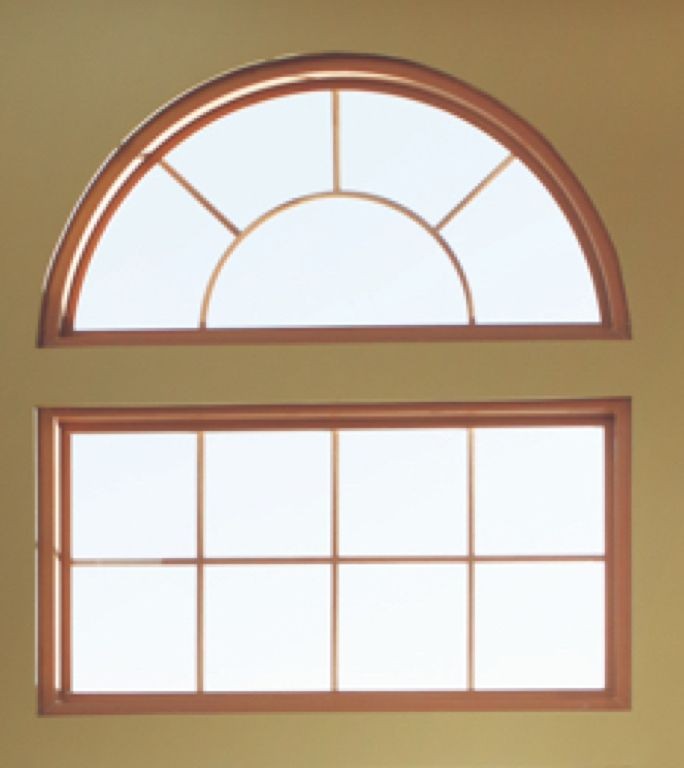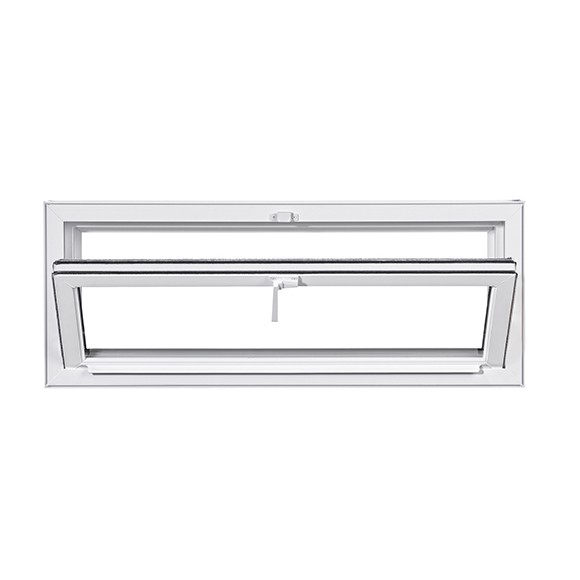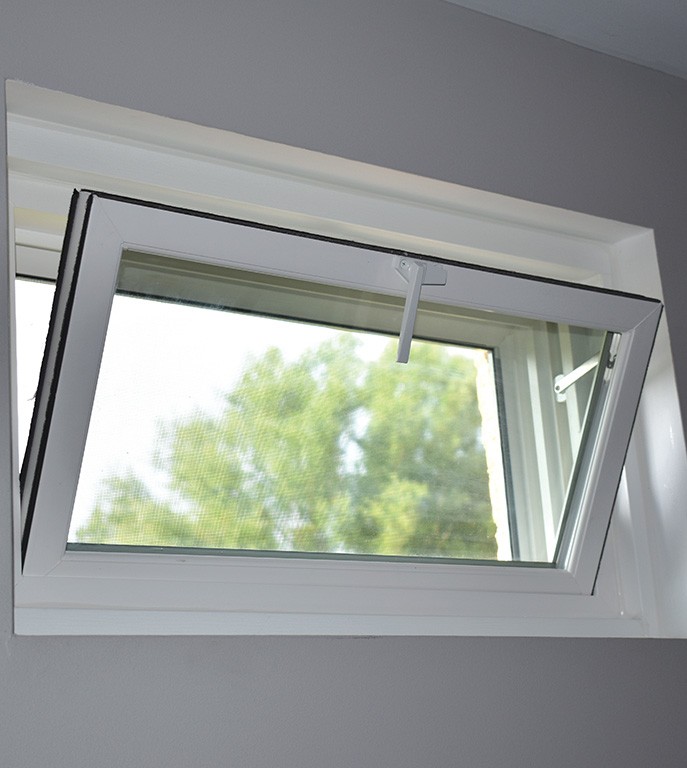A bow window is an elegant form of projection window that is typically found in living rooms and dining rooms. Bow windows are easily confused with bay windows, because their size, shape and function are very similar.
Having information about these two types of windows, including what bow windows can do for your home and where to put a bow window, can help you decide whether this type of window is right for you.
Here’s what every homeowner should know and what we will cover:
- What Is a Bow Window?
- What Does a Bow Window Look Like?
- How Do Bow Windows Work?
- Comparing the Pros and Cons of Bow Windows
- How Can You Tell When It Needs To Be Replaced?
- How to Clean or Care For Windows?
- Are There Alternatives To Bow Windows?
What Is a Bow Window?
Bow windows are a form of projection window, which means they stick out from the wall and out over the lawn. Bow windows are similar to bay windows in that they are angled or curved to create a bench-like space inside the house (1).
To the untrained eye, it can be hard to tell the difference between a bow and bay window. The most notable difference between the two is the number of windows and the measurement of the angles the window forms.
Bay windows angle outward sharply and typically consist of three window panels. Bow windows curve outward gently, and typically consist of three to six window panels, known as lites (2).
What Does a Bow Window Look Like?
Bow windows are curved gently, giving them an almost church-like or Victorian appearance. The soft, gentle sweep of a bow window is perfect for larger homes with subtle architectural details like arched windows and doorways, round rooms and stone exteriors (3).
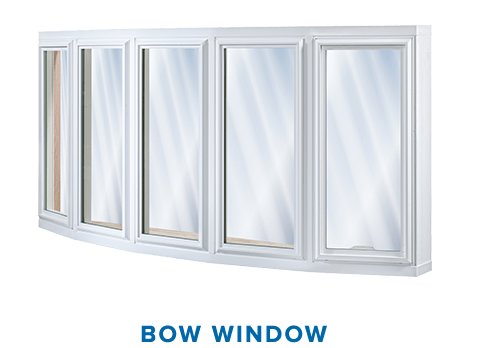
Because they project outward, bow types allow more light into the home than standard double-hung or single-hung types. This makes bow windows the perfect choice for sections of the house that face north or east, where direct sunlight is unavailable.
A bow window can have as few as three panels, like a bay. However, a typical bow window will have four, five or six panels, and a seat board similar to a bay window.
Bays usually consist of one large pane of glass (like a picture window) and two flagging panels, while bow windows have panels of equal size. Bows do not have a "picture window" per se, since the panels are all equal to one another in width (4).
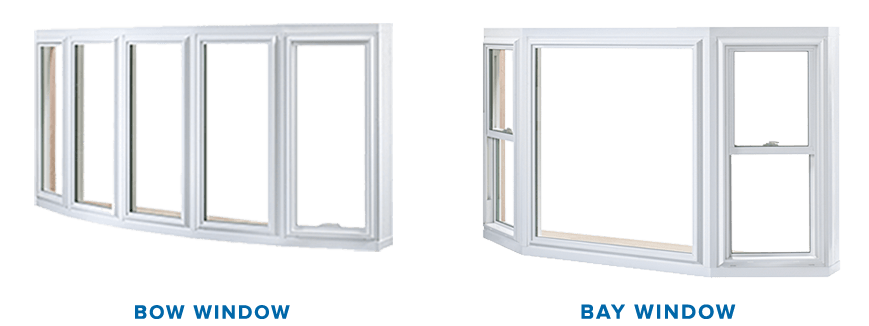
How Do Bow Windows Work?
Bow windows are usually made up of casements that open with a crank, to allow ventilation into the home. Casement panels open outward on hinges. Sometimes bow windows are made of single-hung or double-hung windows that lift up on tracks (5).
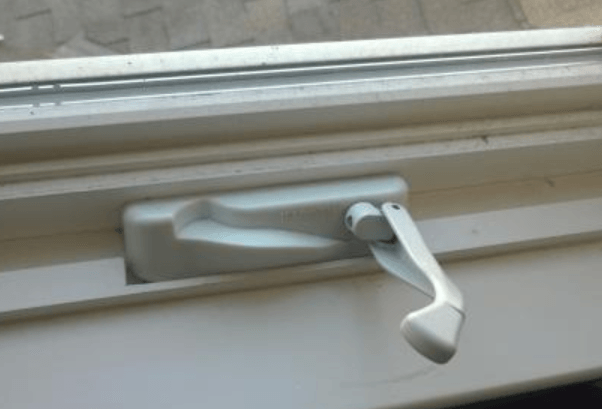
Because their lites are narrow, finding curtains or blinds that fit can be a challenge. Many homeowners leave their bow windows bare to allow as much light as possible into the room.
Comparing the Pros and Cons of Bow Windows
Bow window types have many benefits that homeowners find desirable. Some of the greatest benefits include (6, 7, 8):
- Light in the home. Bow windows have more glass than bays, and are often longer than bay windows, which enables them to cover a larger portion of the wall and allows more light.
- Can curve around a corner. Depending on the structure, these windows are sometimes able to curve around corners, giving the home a rounded appearance and adding an almost castle-like detail to the house.
- Unique beauty. Bows can be more costly than some other window types, so they're less common which can make a property unique and increase the value.
- Air flow. Because bow windows project into the yard, air flow in rooms with bow windows can be better than air flow in rooms with standard windows only.
- Excellent views. Bow windows are an especially smart addition to parts of the home where there are notable, beautiful views.
- Offers a more narrow profile than bay windows. These windows hug the edge of the house more tightly than bay types. For a home close to the property's edge, this can be an advantage.
Although there are many advantages to bow windows, there can be some disadvantages as well. Disadvantages include:
- Less seat space than a bay. Bow types tend to project a more narrow space into the yard and therefore provide less seat space in the house.
- No "picture window." All bow window lites are the same size, which means that there is no "picture window" that is wider than the other sections.
How Can You Tell When It Needs To Be Replaced?
Bow windows do need to be maintained, just like other types of windows. While not the case for vinyl, for wood windows, without regular maintenance like re-caulking, repainting and repair, the frame or seat can develop wood rot, mold or mildew. Signs that your window needs to be replaced include:
- Rot around the sashes. Rot around the sashes can lead to leaks in the home, mold and mildew. While a small amount of rot can be repaired, rampant wood rot is an indication the window needs to be replaced.
- Rot around the frame. Frames need to be painted regularly in order to stay water tight. If the frame is not repainted or re-stained regularly, rot in the frame can quickly lead to the total deterioration of the window.
If the frame or sash begins to rot, the lites may become difficult to open or close, the wood may splinter and water stains may appear on the wood, seat and wall surrounding the window. Homeowners are encouraged to watch for these signs when inspecting their windows at home (7).
How to Clean or Care For Windows?
Typical bow window maintenance involves cleaning the window panes and periodically lubricating the casement hinges. To clean the windows, spray the glass with a mixture of vinegar and water, then use a squeegee to clean the glass.
If the window has dividers (called muntins) (7), use a rag to clean the space around the muntins.
While cleaning the window, check for signs of wear, tear and structural issues. Cracks, water damage, bowing and sagging can all be signs that the window is pulling away from the house. Contact a contractor for further inspection if you notice any of these warning signs (8, 9).
Are There Alternatives To Bow Windows?
For most homeowners, the natural alternative to a bow window is a bay. Bow windows have more glass, provide a more narrow seat and often provide the most light of either window type. However, bay windows are ideal for homeowners who want a place to sit, relax and spend time indoors.
Making a decision between these two types can be difficult, but viewing examples of each can help (10).

